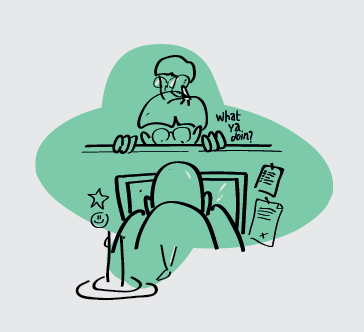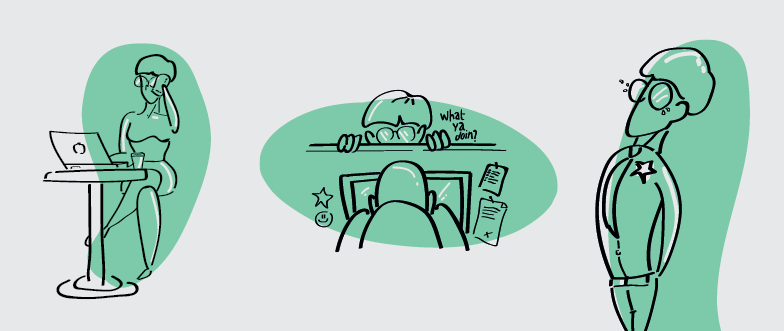Building a business? Avoid these fables of productivity.
Over the last year 10 years, the push towards office productivity has created a number of organizational myths that haven’t actually made employees more productive or better at what they do. From the evils of remote work to the open-concept office, these ideas have pervaded corporate culture over the last century. But the research debunking all of the above is vast. Here are some office productivity trends that have fallen flat.

Myth: The open-concept office increases collaboration.
Since the tech boom, open-concept workspace crusaders have been touting the amount of additional team collaboration that occurs inside open-office spaces. But a July 2018 study titled The Impact of the ‘Open’ Workspace on Human Collaboration conducted by two Harvard researchers actually shows that when cubicles come down, face-to-face interaction between team members dwindles. Instead, the number of e-mails and texts increases. Thus, open-concept offices—rather than promoting an environment full of vibrant idea sharing—create an environment where workers are more likely to withdraw socially from their officemates.

Myth: Money motivates employees.
While corporate leadership may think that employees are solely money motivated, research says this isn’t the case. Though cash is important to help manage employees’ day-to-day lives like rent, groceries, and other basics, research states that what motivates employees to do better work are the intangibles. These specifically pertain to manager-employee relations. In a Harvard Business School article called Winning the War for Talent: Modern Motivational Methods for Attractive and Retaining Employees co-authored by Ashley V. Whillans, she states that 80 percent of American employees don’t feel recognized or rewarded. What employees crave, Whillans says, is to see that their managers appreciate them, not simply through monetary rewards, but through other things, like flexible work-from-home schedules, gift cards for pulling off difficult projects, or a simple “thank you.”

Myth: Being at the office means doing more work.
With the amount of remote workers increasing globally, traditionalists will argue that remote work isn’t real work. In a Harvard Business Review article titled To Raise Productivity, Let More Employees Work from Home, Nicholas Bloom, author and professor of economics at Stanford, details how he and his graduate student James Liang, co-founder of Chinese Travel company Ctrip, gave call centre staff the opportunity to work from home for nine months. The data collected after the study revealed that participants who worked from home were happier, more productive, and less likely to quit. “The results we saw at Ctrip blew me away,” Bloom wrote. “We found that people working from home completed 13.5 percent more calls than the staff in the office did—meaning that Ctrip got almost an extra workday a week out of them. They also quit at half the rate of people in the office—way beyond what we anticipated. And predictably, at-home workers reported much higher job satisfaction.”
Get a Handle on Handshakes
Stacey Hanke, communication expert and author of Influence Redefined: Be the Leader You Were Meant to Be, Monday to Monday says that a handshake can speak a thousand words. “In [corporate] culture, a handshake accompanies almost every introduction and initiates many conversations,” Hanke says. “It sets the tone for new relationships by signalling others of your integrity. People often admit to judging others based on this small gesture.”
Six tips on mastering your handshake
Anticipate the handshake: Ensure your hand is free, out of your pocket and not holding onto any items. Switching hands to shake is distracting and awkward.
Use your right hand: Even if you’re a leftie, Western culture dictates right-handed handshakes as key.
Maintain a strong, confident posture: Remain upright and refrain from leaning. If necessary, take a step toward the person you’re greeting. If you’re seated upon meeting someone, stand up before shaking their hand. This signifies respect.
Make intentional eye contact: Once your hand makes a connection, ensure your eyes connect too. Use a kind greeting such as “nice to meet you” or “great to see you again.” Incorporate their name with your greeting to help better solidify your introduction. This interaction will warm up anyone with whom you connect.
Remain firm throughout the handshake: Grasp the other person’s hand with a firm grip without squeezing. Don’t allow your hand to fall limp upon the initial grip.
Shake from your elbow, not your wrist: Two or three shakes will do. Any more and your partner will begin to feel uncomfortable.








